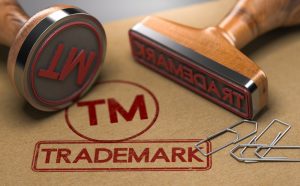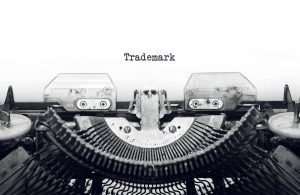Editor's Note: Take a look at our featured best practice, Risk Management and Compliance - Implementation Toolkit (Excel workbook). The Risk Management and Compliance Implementation Toolkit includes a set of best-practice templates, step-by-step workplans, and maturity diagnostics for any Risk and Compliance related project. Please note the above partial preview is ONLY of the Self Assessment Excel Dashboard, referenced in [read more]
When Should You Trademark Your Business Name?
* * * *

You must understand that you might develop an excellent business as a visionary or an entrepreneur, but if your business name doesn’t have trademark protection, you’ll have no option but to watch someone benefit from your sweat. Therefore, ensure you do it now if you’ve not trademarked your business name. This will protect your business brand and assist it in advancing to the next level.
You should seek the help of a trademark registration service to create a strong trademark that helps you create a successful business brand that stands out from competitors. Ideally, don’t wait until you’re in business for long because this approach is likely to fail. Think about trademarks right from the beginning when selecting your business name and logo and developing the business entity. This article will enlighten you more about trademarking your business. Let’s get started.
What’s a Trademark?
Before starting your business, you must create a business name, design a logo, and build a slogan. However, before publicizing those, you must consider protecting your logo and name. This is where the trademark comes in to help. A trademark protects your business image, logo, slogan, or symbol from other businesses using a similar image, slogan, and symbol.
A trademark ensures that your business entity isn’t unlawfully imitated. On the other hand, you must also ensure that your brand and business don’t cause interference with other trademarks. Otherwise, you can get into legal trouble. This means you’ve got to know how to differentiate between trademarks and copyrights.
Why Is Trademarking a Logo Important?

Bring or Avoid Legal Action
When your business logo is trademarked, it enables you to prevent others from using a similar business logo that’s within your industry. It also makes others avoid legal action because it notifies them that your business name is registered for trademark. However, you can confidently take legal action if someone ignores and infringes your trademark.
Builds Trust and Goodwill
In most cases, your services and product quality are usually recognized by your clients via your business name. Thus, trading your logo helps you to create and enhance your reputation. In addition, it also assists you in developing your potential client base, more so if you depend on referrals made by word of mouth.
Allows You to Stop the Import of Foreign Goods
With a registered trademarked logo, you’re capable of stopping the importation of foreign goods that have the potential of infringing on your trademark. This also prevents your business brand from being diminished.
Creates an Asset
Trademarking your business logo helps you build an intangible asset because it transforms your business into an intellectual property of the organization. Furthermore, with a trademarked logo, you can franchise, assign, or sell to earn cash.
5 Steps to Trademark a Business Name
After familiarizing yourself with trademarking and understanding the fundamentals of trademarking your business name, you should now get yourself one. This can seem pretty overwhelming, but there’re five steps to trademarking your business name. They include:
1. Identify an Excellent Duration for Trademarking Your Business Name
When should you trademark your business name? Well, because trademarking is significant to your business, then trademarking your business should start immediately. Ideally, the appropriate time to make a trademark application for your business name is immediately after filing paperwork to create your corporation. Doing this before launching your business helps you to protect your business name for commercial purposes once it becomes effective. Besides, USPTO takes a year or more to get your business name trademarked. This explains more about why you should apply early enough.
Similarly, if you commenced your business without filing a trademark application to protect your business name, worry less. And remember, no one from your state will use a similar name to your business name as long as you’ve created a legal entity with your state’s secretary. Furthermore, law trademark rights protect your phrases, logos, and names, which are often used for business reasons.
2. Run a Trademark Search
On many occasions, running a trademark search will always assist you in figuring out potential conflicts before you decide to make a trademark application. Your trademark application risk being rejected if you file the trademark paperwork without considering running a search. Additionally, your application can get rejected if there’s an individual who filed before you or if theirs is a business with the same name as the one you want to use.
To avoid such scenarios, you better run a trademark search using LegalZoom, and USPTO, which have packages covering international searches, common law trademarks, and state trademarks. Therefore, ensure you identify potential conflicts early before it’s too late. And only file a trademark application after running a trademark search.
3. File Your Business Name Trademark Application
After verifying your business name has no trademark, feel free to continue with a trademark application. You can decide to apply for your business trademark directly via the USPTO website. This kind of application is excellent for DIY users.
However, getting a business trademark from USPTO isn’t as easy as it might seem. Therefore, when making your application, you should be careful with each aspect of your application process. If you fail to do so, you risk your application being rejected. This explains why in most cases, you are recommended to the online trademark service for assistance, such as the LegalZoom platform, which is also beginner friendly.
4. Monitor Your Application Process And Submit Extra Paperwork If Need Be
You must understand that trademark application isn’t all about applying, and that’s it. The USPTO attorney will likely ask you for supplemental data concerning your trademark. If you hit the deadline without giving the USPTO attorney a response, your application is likely to be denied, and you’ll have no option but to start afresh.
Remember, this can make you lose your business name, especially if someone proceeds to file before you during the lapse duration. Here, you’ll appreciate the significance of having an attorney in your entire trademark process of registration. Additional forms that USPTO might request from you include the petition forms, response forms, and miscellaneous forms, among other documents. As your application goes via the USPTO approval, ensure you concentrate on your application.
5. Defend Your Trademark
USPTO tackles renewals and provides trademarks. However, it isn’t responsible for enforcing trademark violations. This means it’s your responsibility to ensure that other businesses don’t take advantage of your name. But this can be challenging considering that there are many businesses worldwide. In this case, trademark monitoring services such as LegalZoom can help you.
This trademark monitoring service comes up with customized trademark monitoring queries, specifically for your business name. Then it gives you a comprehensive mark report each month. Such a service also entails active monitoring of pending applications and the USPTO database.
Likewise, LegalZoom’s advanced discovery has the potential to identify trademarks that are almost like yours in terms of names but differ by two or a single letter. If they notice a trademark infringement. LegalZoom will connect you with a qualified attorney to assist you in defending your name before things become worse.
Takeaway
To protect your business brand, you must consider filling out a trademark application for your business name. Remember that this trademark is specifically associated with services and goods you provide. Furthermore, it doesn’t touch other aspects of your commercial business. You must also consider trademarking your logo. This will protect your logo and prevent other business owners from using a logo that looks similar to yours. This guide will help you to register your business before launching it officially.

Do You Want to Implement Business Best Practices?
You can download in-depth presentations on Compliance and 100s of management topics from the FlevyPro Library. FlevyPro is trusted and utilized by 1000s of management consultants and corporate executives.
For even more best practices available on Flevy, have a look at our top 100 lists:
- Top 100 in Strategy & Transformation
- Top 100 in Digital Transformation
- Top 100 in Operational Excellence
- Top 100 in Organization & Change
- Top 100 Management Consulting Frameworks
These best practices are of the same as those leveraged by top-tier management consulting firms, like McKinsey, BCG, Bain, and Accenture. Improve the growth and efficiency of your organization by utilizing these best practice frameworks, templates, and tools. Most were developed by seasoned executives and consultants with over 20+ years of experience.
Readers of This Article Are Interested in These Resources

|
|
34-slide PowerPoint presentation
|
|
170-slide PowerPoint presentation
| |||
About Shane Avron
Shane Avron is a freelance writer, specializing in business, general management, enterprise software, and digital technologies. In addition to Flevy, Shane's articles have appeared in Huffington Post, Forbes Magazine, among other business journals.
Top 10 Recommended Documents on Compliance
» View more resources Compliance here.
» View the Top 100 Best Practices on Flevy.













